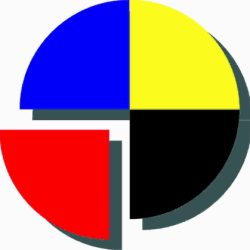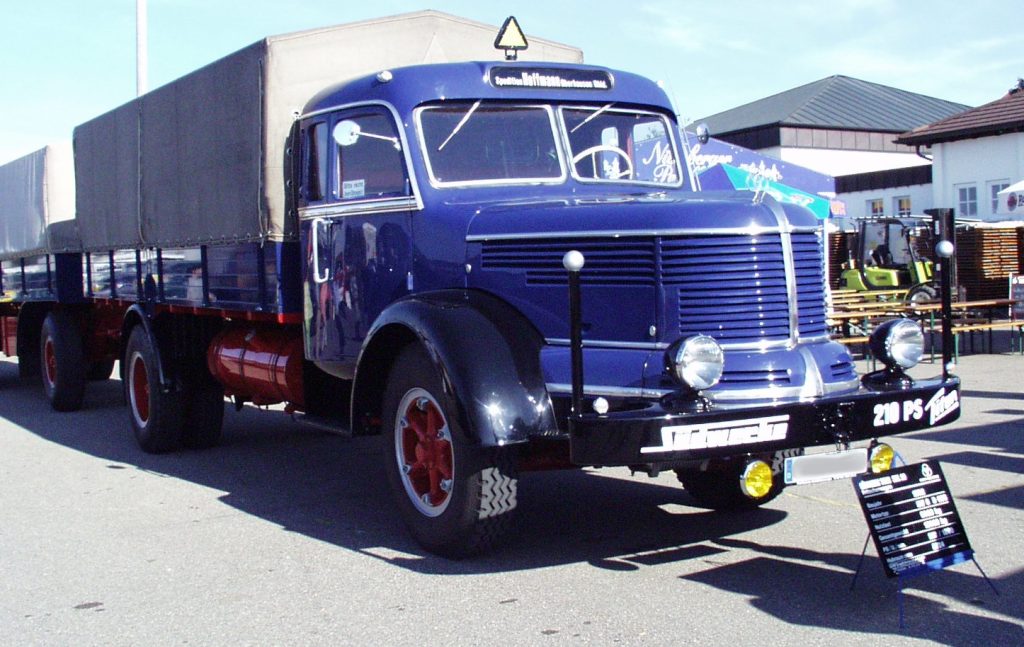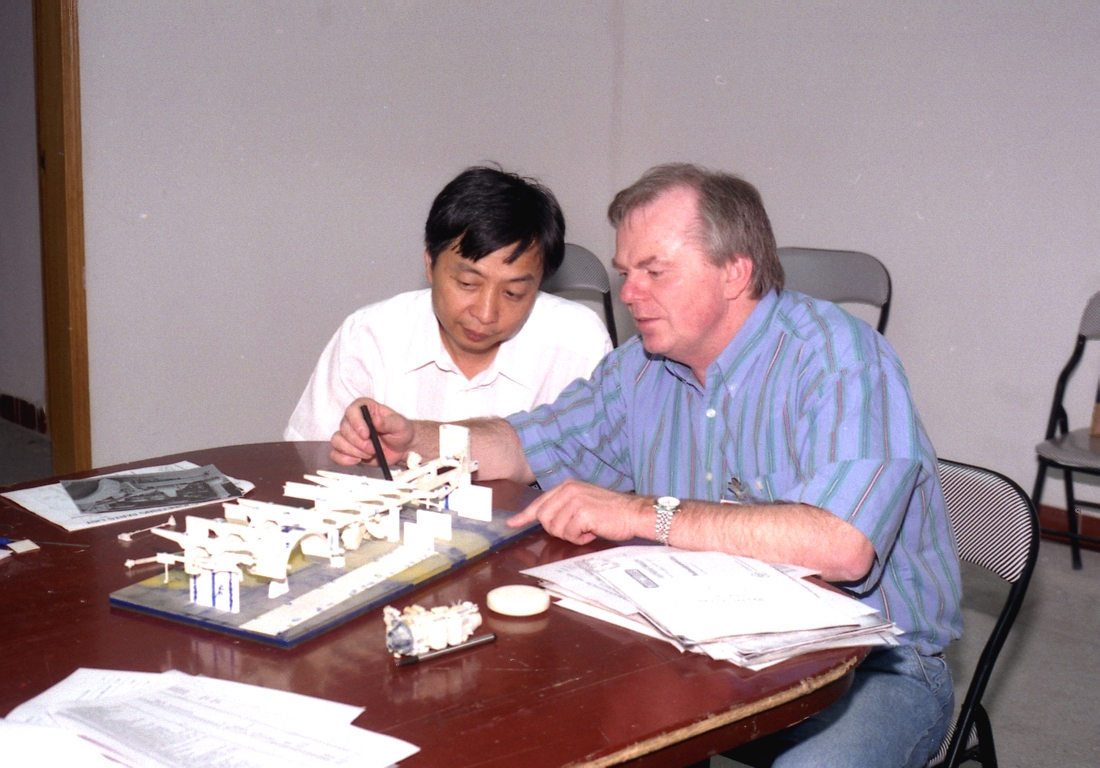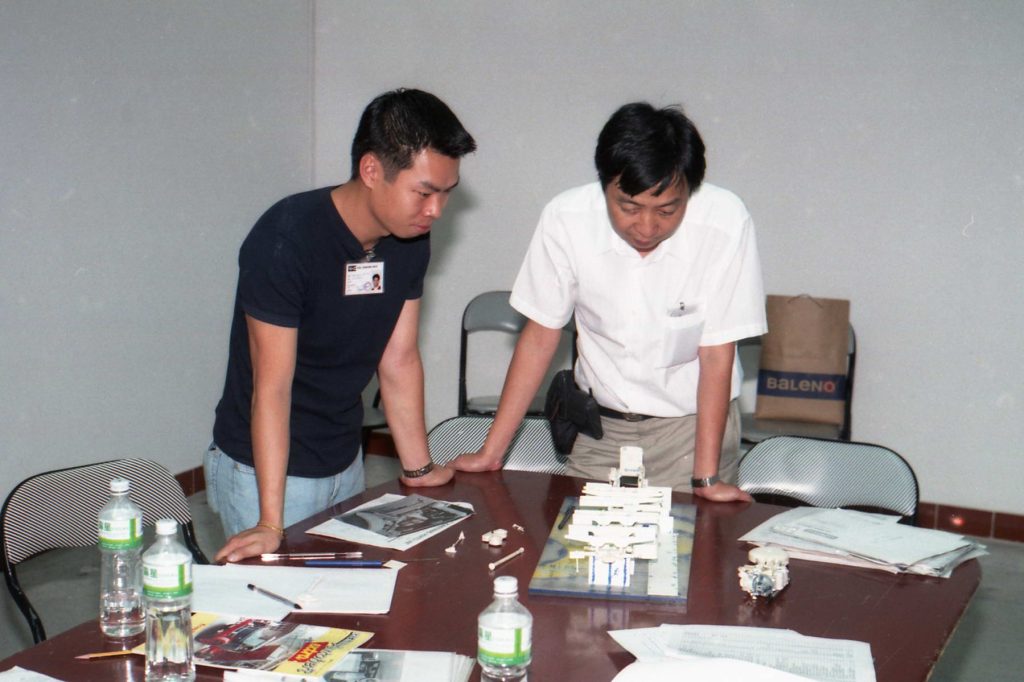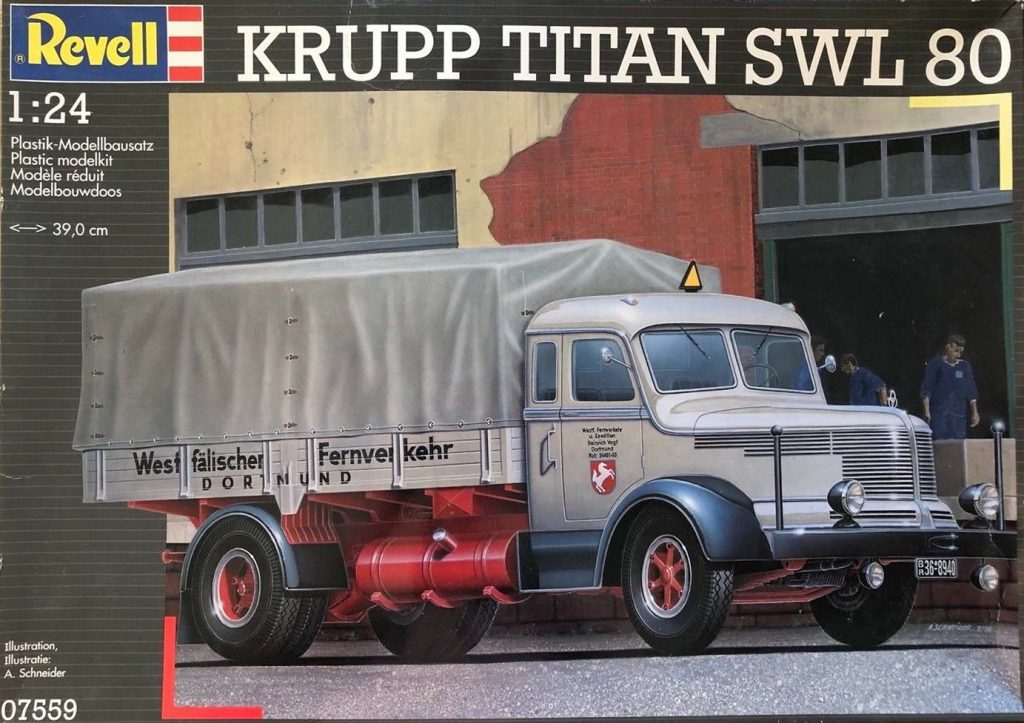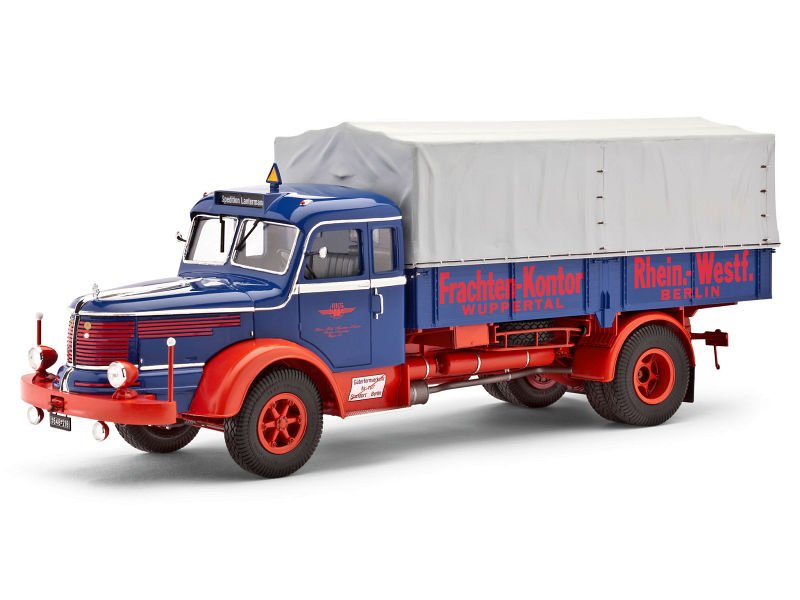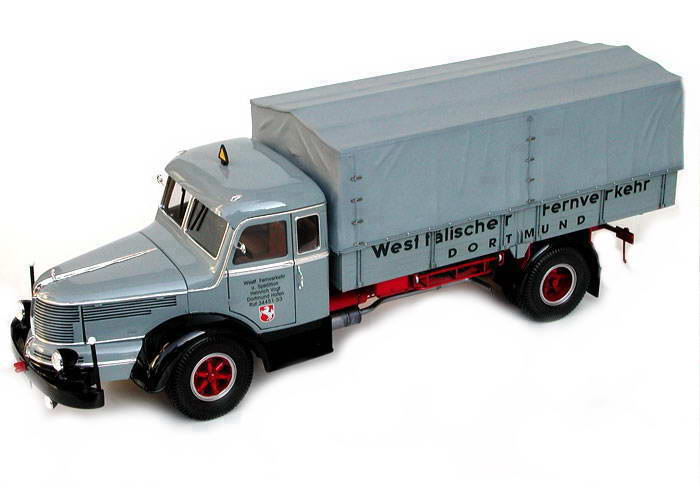
After the Büssing 8000 was very well received by the model builders, it was of course an absolute must to develop the next oldie truck and that was the Krupp Titan SWL 80. Flatbed, tarpaulin, body and the tires with the Trilex Rims were not made new, these components are identical to those from Büssing. Here too, unlike me, the management decided in favor of this truck and not, as I had suggested, a Mercedes or MAN.
As far as data, pictures and drawings for the tool construction were concerned, it was much easier with this model because I had received documents from Krupp in Essen, unfortunately no dimensional drawings of the engine but only illustrations from brochures. I got everything that was still missing for the development from Helmut Hoffmann in Oberhausen, because he had everything I needed.
As if he had known that I was coming, there was a Krupp Titan chassis with a motor in his yard at the time. In one of its halls there was also a driver’s cab that had already been partially restored. I clicked my camera more than 200 times and got everything I needed for a perfect model.
When the data package was put together with photos and drawings, it was off to the toolmaker, but not back to Denmark to the Heljan company, but a few kilometers further to Hong Kong. There was a company there in the mid-1990s that also built tools for Revell and also produced injection moldings.
The entire trip to China lasted a week. During this time I looked at the tooling model, which was 1.5 times larger than the later kit model, part by part and compared it with photos and drawings. All components were removable and could be reworked again and again. The model builders in China had done a great job and I only had a few points that needed to be corrected, such as the curves of the front fenders, because the radii weren’t right. In the absence of drawings, the boys had only built an exact replica of the engine based on photos.
By the way, since no computer at that time could calculate the folds of a tarpaulin and such is formed by the material, the temperature and the weather, I had built a double-sized model. The body was made of wood on which I had applied a layer of clay and then shaped it with my wet fingers, meaning all the folds are hand modeled. After the layer of clay had dried, the entire tarpaulin was scanned with a copier and milled into the metal. Whether it’s the Büssing, Krupp Titan or Hanomag trailer, all these models have the same tarpaulin structure.
